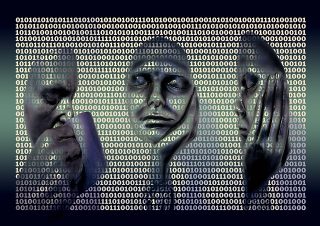Bundesgesetzblatt as Open Source
Christian Endt: Aktivisten stellen alle Bundesgesetzblätter ins Netz, Süddeutsche Zeitung 10.12.2018
Each law contains a double fiction. Once it creates a conceivable state that is called linguistically, but must first be enforced by the threat and real enforcement of sanctions. On the other hand, the proclamation of the law contains the fiction that the law has already become known to the citizen. This fiction is called “irrefutable presumption” from a legal point of view, however, and instead of actual knowledge, the possibility of knowledge is sufficient. Otherwise law could not function at all as a self-referential system. It is the basis of the validity of the law to which the citizen has to adhere after the proclamation.
It is therefore all the more absurd to hide the promulgation gazettes behind a payment barrier – as happened with the Bundesgesetzblatt (German Federal Law Gazette) and also with some of the law and ordinance gazettes of the federal states of Germany. “Hiding” also means offering only a “read-only version” that cannot be printed out. One could even ask the question whether a proper proclamation has taken place.
The Act on Copyright and Related Rights (Copyright Act) (Gesetz über Urheberrecht und verwandte Schutzrechte (Urheberrechtsgesetz)) has taken this into account:
“§ 5 Official works: (1) Laws, ordinances, official decrees and announcements as well as decisions and officially drafted guidelines on decisions enjoy no copyright protection.”
However, the Bundesanzeiger-Verlag takes the view that its published laws, i.e. pdf files, whose contents are supplied by the state, enjoy database protection. However, this absurd assertion contains the threatening potential of a possible and uncertain court case, which many administrative lawyers would like to avoid in the interests of a smooth career.
The information specialist, however, has always been aware that a parliamentary or legal information system also includes free access to both promulgation bulletins and consolidated laws. The EU has therefore been making all public legal documents freely and electronically accessible for some time now. But the Parlamentsspiegel, a documentation system that wanted to make the parliamentary initiatives of the federal states – apart from the parliamentary databases there – available across the board, also scanned the Federal Law Gazette and the promulgation gazettes of the federal states and made them available online. However, this service was discontinued in 2014. It was not the information specialist, but the administrative lawyer as the objector who cut off the information for the citizen.
The company Makrolog has created a commercial product for Germany with its Recht für Deutschland service – also in accordance with the Copyright Act through its own digitalisation of the promulgation sheets.
The Open Knowledge Foundation Germany now offers all editions of the Federal Law Gazette freely accessible with OffeneGesetze.de. A full-text search complements the display by volumes and numbers. This grateful private initiative shows how miserable it still is in terms of digitisation with state initiative. Digitisation does not just start with artificial intelligence. Also in the matter of consolidated law, the private site www.buzer.de shows how conveniently, up-to-date and freely accessible one can present legal information: The text of the law, earlier versions with the possibility of creating synopses, reference to the official justification, citation in regulations, current changes, pending changes, search for regulations, law and full text, updating with web widget, feed, mail – it couldn’t be better. On the other hand, the Gesetze im Internet of the Federal Ministry of Justice and Consumer Protection, which are not the official version even there, and also dejure.org clearly fall off.
As far as the official version is concerned, the “Act supplementing Article 120 and amending Article 121 of the Constitution of the State of Hesse” : “The Journal of Laws and Decrees may be kept in electronic form in accordance with a law” adopted in the referendums on the amendment of the Constitution of Hesse on 28 October 2018 may be a step in the right direction.
